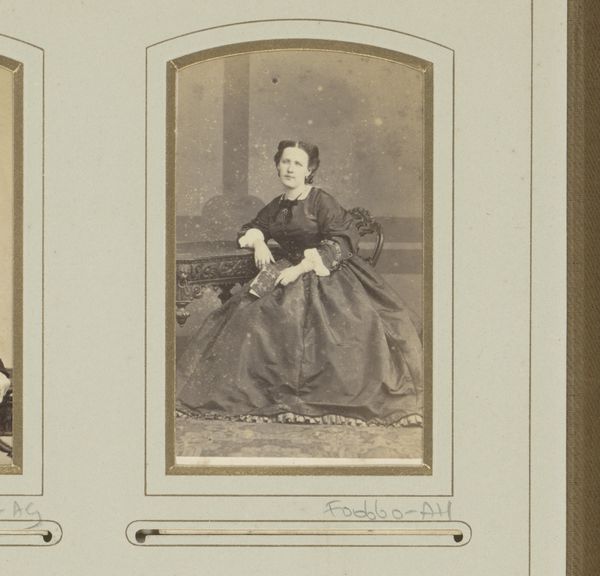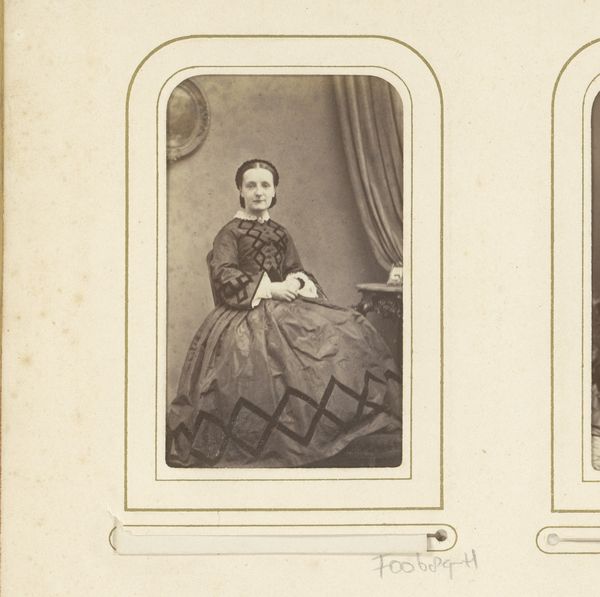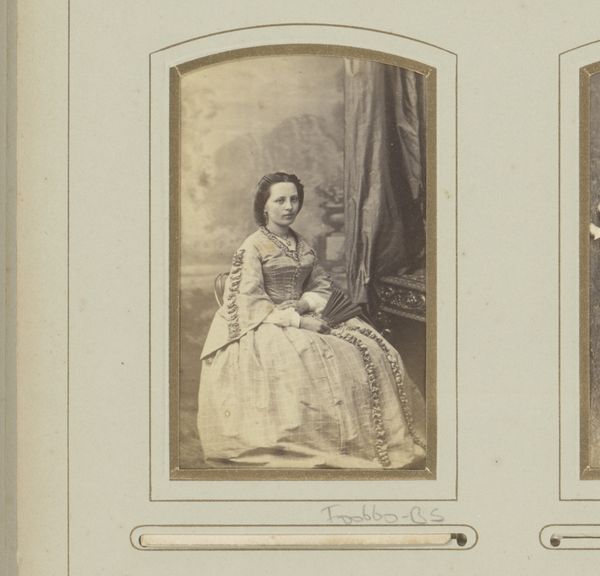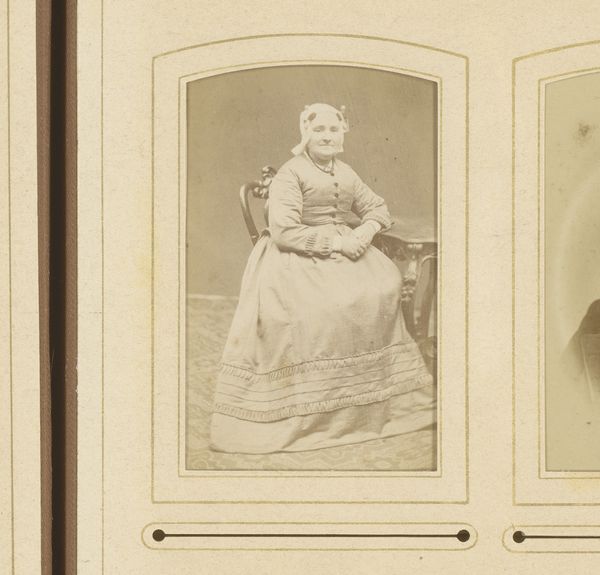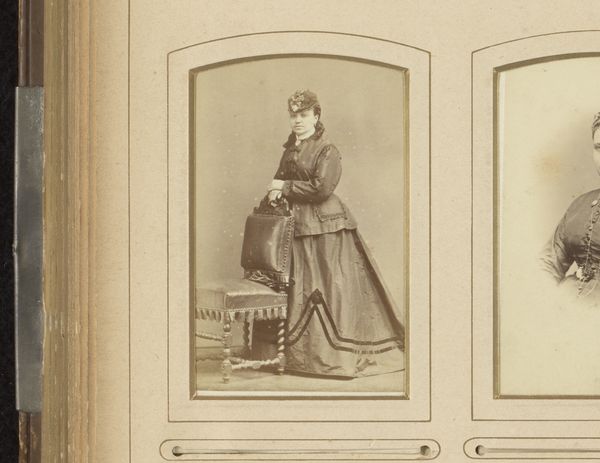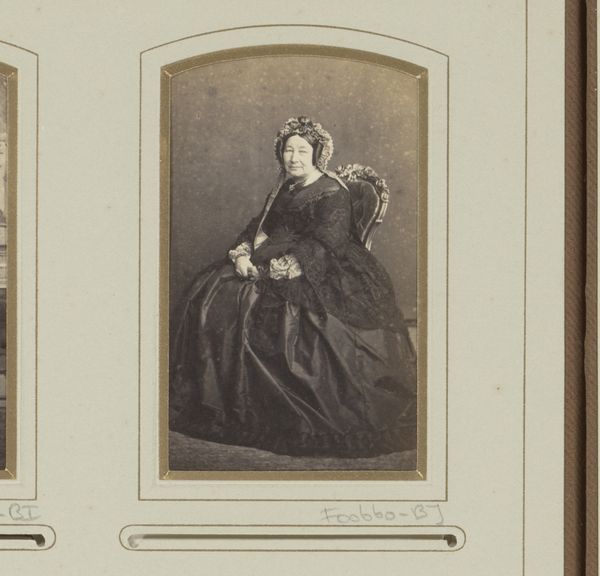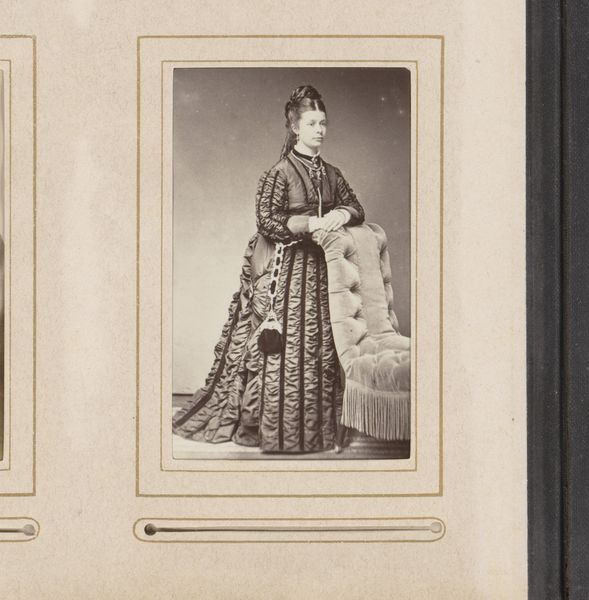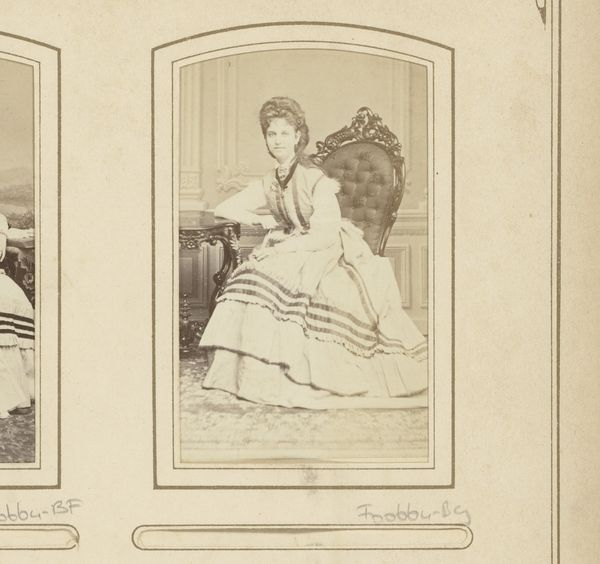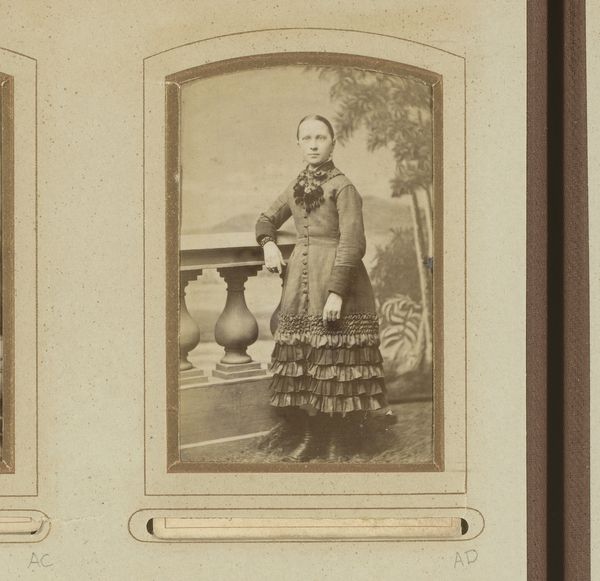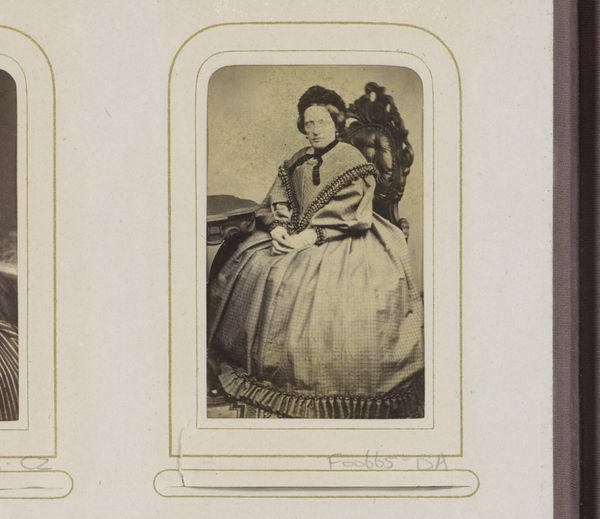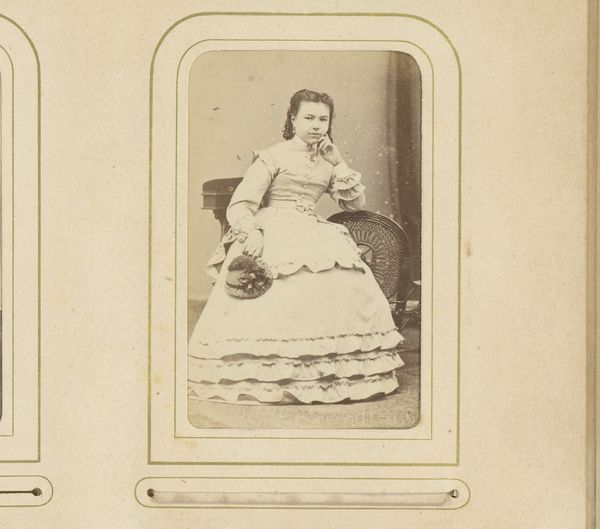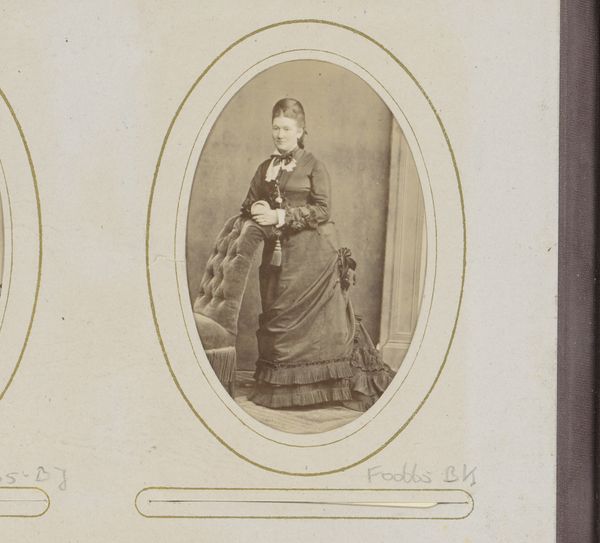
photography
#
portrait
#
photography
Dimensions: height 84 mm, width 51 mm
Copyright: Rijks Museum: Open Domain
Curator: Welcome. Before us, we see a portrait dating from about 1880 to 1890, attributed to Joseph Maes. It depicts a seated woman, a wonderful example of period photography. Editor: There's a compelling austerity here, isn't there? The composition is quite centered. That somber, full skirt, and the reserved expression create a formality that’s almost imposing. Curator: The contrast between the stark background and her dark dress definitely emphasizes the figure's presence. Her garments, seemingly devoid of any decorative element, highlight the formal rigidity prevalent in the late 19th century. What kind of labor do you imagine would go into creating a dress of that size? Editor: Precisely. You can almost feel the hours spent in constructing that massive skirt, and the labor invested in even a seemingly plain fabric – the weaving, the dyeing, not to mention the implications for female labor and restricted movement suggested by such cumbersome clothing. I wonder who fashioned this very photograph? Curator: A fascinating query. Photography at the time was, while increasingly accessible, still a craft requiring technical skill. We see a clear interplay between lighting and shadow, a strategic orchestration used to direct the gaze of the viewer, not merely capture reality. Notice the glints of light on her face. It's masterfully executed. Editor: The materials involved, too—the photographic chemicals, the paper, the developing processes—it all speaks to an evolving industrial landscape that supported these artistic endeavors. Also, what's that strange fading across the piece? Does it mark an artefact, a stain from use and preservation gone wrong? Curator: Most probably, this speaks to unstable developing process used in early photography, adding to its uniqueness and historical dimension. It encourages viewers to ask questions. A photograph may attempt to represent, but as an object, it inherently presents. Editor: Ultimately, for me, it is an insightful peek into an era defined by constrained presentation, even in a format attempting to be immediate, accessible and documentary like photography. The portrait embodies both art and the implications of mass consumption during this time period. Curator: I agree. It captures a precise period—a visual echo of social conditions, of artistry meeting technique—which gives us, generations later, so much to contemplate and study.
Comments
No comments
Be the first to comment and join the conversation on the ultimate creative platform.
